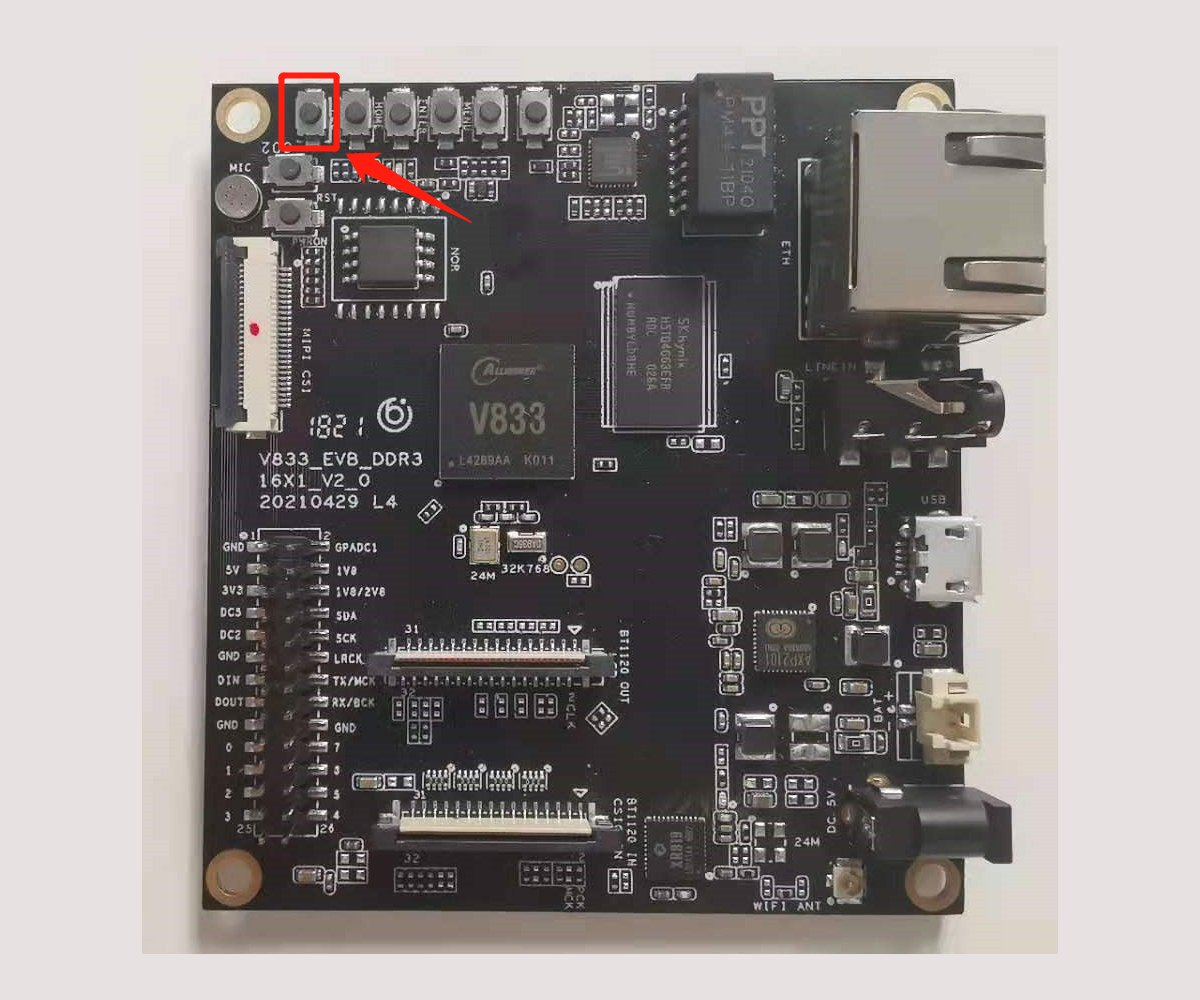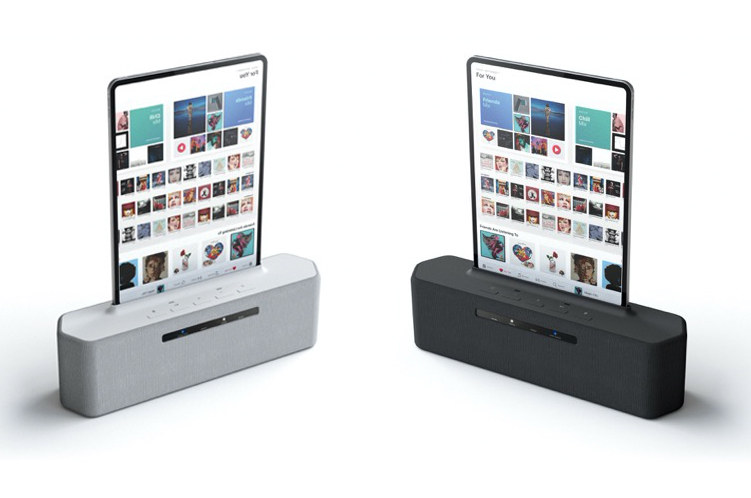Allwinner D1s (aka F133) is a cost-down version of Allwinner D1 RISC-V processor introduced earlier this year together with a Linux capable development board, with the main difference being the integrated 64MB DDR2. Besides the built-in RAM, Allwinner D1s comes with many of the same features as D1 RISC-V SoC, but loses HDMI output and the HiFi 4 audio DSP, and Allwinner made some tweaks to the IOs with one less I2S audio interface, and general-purpose ADC. Allwinner D1s/F133 specifications: CPU – RISC core with 32 KB I-cache + 32 KB D-cache (CNXSoft: not specified, but probably the same Alibaba/T-Head Xuantie C906 RISC-V core as used in Allwinner D1) DSP – HiFi4 DSP 600MHz with 32 KB I-cache + 32 KB D-cache, 64 KB I-ram + 64 KB D-ram Memory – 64 MB DDR2 (SIP) Storage I/F – SD3.0, eMMC 5.0, SPI Nor/Nand Flash Video Engine Video decoding H.265 up […]
Allwinner V833 AI video development board runs Tina Linux or Melis RTOS
Lindenis V833 is an AI video/camera development board based on Allwinner V833 single-core Cortex-A7 processor with a 400 MOPS AI accelerator (NPU) and running OpenWrt-based Tina Linux or Melis RTOS based on the RT-Thread kernel. The board comes with up to 3GB RAM, a MicroSD card socket, MIPI DSI, MIPI CSI, and BT1120 interfaces for video output and input, Gigabit Ethernet, 2.4 GHz WiFi, and a few other I/Os. Lindenis V833 specifications: SoC – Allwinner V833 single-core Arm Cortex-A7 processor @ up to 1.2 GHz with H.265/H.265 1080p video encoder, MJPEG 1080p video encoder, 400 MOPS AI accelerator (See PDF datasheet) System Memory – Up to 3GB DDR3/DDR3L Storage – MicroSD card slot with support for SDHC and SDXC, SPI NOR flash Display Interfaces 4-lane MIPI-DSI up to 1080p BT1120 output Touch panel header Video In 4-lane MIPI-CSI camera interface BT1120 input Audio – 3.5mm Line-in jack, built-in microphone Connectivity […]
reTerminal – A Raspberry Pi CM4 based 5-inch HMI Terminal
Seeed Studio has just unveiled reTerminal HMI terminal that reminds me of the company’s Wio Terminal based on Microchip SAMD51 Arm Cortex-M4F microcontroller with a 2.4-inch display. But as we’ll look into the details, reTerminal is quite a different beast as a Linux-capable device powered by a Raspberry Pi CM4 module with up to 8GB RAM, equipped with a 5-inch capacitive touchscreen display, and supporting plenty of connectivity options from GIgabit Ethernet to WiFi to LoRaWAN. reTerminal specifications: SoM – Raspberry Pi Computer Module 4 with Broadcom BCM2711 quad-core Cortex-A72 processor @ 1.5 GHz, up to 8GB RAM, up to 32GB flash Display – 5-inch capacitive touchscreen display with 1280×720 resolution Video Output – Micro HDMI port up to 4Kp60 Camera I/F – 2-lane MIPI CSI inteface Connectivity Gigabit Ethernet with optional PoE support 802.11 b/g/n/ac WiFi and Bluetooth 5.0 BLE (on Raspberry Pi CM4 module) Optional 5G, 4G LTE, […]
Rockchip RK2108 Smart Audio Dock Converts Tablets into Smart Displays
Last April, Rockchip published a roadmap to 2020 with processors such as RK3588 Cortex-A76/A55 or RK3530 quad-core Cortex-A55 SoCs. Part of the roadmap was also Rockhip RK2108 Arm Cortex-M4 microcontroller with an Audio DSP which did not get as much coverage. The company has now announced RK2108 based smart docks that convert tablets into smart display / speakers so that they can be waken-up and controlled by voice commands. Rockchip RK2108 audio MCU supports A/D audio interface, MIPI DSI/MCU LCD interface and USB2.0 interface, and comes with the following key features: Built-in audio DSP for voice/audio signal processing Audio pre-processing, active noise reduction, AEC, etc… for improved voice recognition Customizable wake-up words and offline instructions Ultra-low power consumption in both standby and operating modes The RK2108 smart dock pictured above connects to compatible Android tablets over USB or Bluetooth, and turns those into smart display products that can handle voice […]
Lenovo Launches the First Smart Display with Google Assistant for $200 and Up
Android Things based smart displays were announced at CES 2018 with companies like Lenovo, LG, JBL, and Sony promising products later this year. In May, Google announced Google Assistant was now supporting smart displays, and released Android Things 1.0, the first production-ready version of the operating system. With all main software components released a few months ago, the first smart displays with Google Assistant support have now started selling for $199.99 and up courtesy of Lenovo. The smart display is available with either a 8″ or 10″ display. Lenovo Smart Display specifications: SoC – Qualcomm Home Hub Platform based on Snapdragon 624 octa-core Cortex A53 processor @ 1.8 GHz System Memory – Up to 2GB RAM Storage – Up to 4GB eMMC flash Display (one or the other) 8″ IPS display with 1280 x 800 resolution, 86° Wide Angle 10″ IPS display with 1920×1200 resolution, 86° Wide Angle Audio 8″ […]
Google Assistant Adds 6 New Voices, Supports Smart Displays, Will Expand to 80 Countries
We’ve already seen announcements about Android P and Android Things 1.0 for Google I/O 2018, but the company also took the opportunity to provide an update to the new features coming to Google Assistant. Some of the improvements are specifically related to the audio features (voice assistant): Google Assistant is now naturally conversational so it can understand more complex requests such as asking the weather using expressions like “Will it be cats and dogs today?”. 6 new voices are now available, and John Legend’s voice is coming later this year. More voices should be supported in the future, thanks to improvements in AI and WaveNet technology from DeepMind that eliminates the needs for recording hundreds of hours of audio in a recording studio, and enabled adding new voices in just a few weeks. Continued Conversation – as its name implies – will allow Assitant and you to have a “natural […]
Android Things is Finally Getting into Products: Smart Speakers, Smart Displays, and More
Android Things was first introduced as Brillo in October 2015, before being renamed to Android Things the following year when a developer preview was released with support for Raspberry Pi 3, as well as Intel and NXP development boards. But if you can’t remember the last time you’ve purchased a device running Android Things that’s normal, because so far, there was none. Google announced this is going to change as the first set of Android Things products have been announced at CES 2018. The first category of devices to run Android Things will be Google Assistant enabled smart speakers with the launch of products such as iHome iGV1 and LG ThinQ WK7. ODM partners have also created full speaker reference designs based on certified Android Things and Cast System-on-Modules (SoMs) powered by Rockchip RK3229, Mediatek MT8516, or based on Qualcomm SD212 Home Hub Platform. NXP i.MX 8M solutions are also […]









